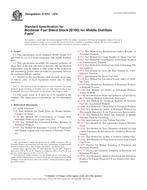1.1 This test method covers the connectivity of the texture as it relates to the drainage capability of the pavement through its surface and subsurface voids. This is a specific device that times how long it takes a known quantity of water, under gravitational pull, to escape through voids in the pavement texture of the structure being tested. The technique is intended to provide a measure of the ability of the pavement to relieve pressure from the face of vehicular tires and thus an indication of hydroplaning potential under wet conditions. A faster escape time indicates a thinner film of water may exist between the tire and the pavement, thus more micro-texture could be exposed to indent the face of the tire and more surface friction available to the tire. The lower the number of seconds it takes to evacuate the water, the lower the water pressure under the tire. It will be up to the operator to compare the results of this test to other pertinent factors such as expected rainfall intensity and frequency, aggregate type, consistency of texture, grade, slope, expected vehicular speed, and accident history, to determine the relationship between the outflow meter reading and the likelihood of hydroplaning on a given surface. Comparing the outflow meter reading of a pavement known to have a history of hydroplaning, against one with a good history, with all other factors similar, will give the operator an indication of the outflow meter number that will be necessary to promote wet weather safety.
1.2 The results obtained using this method are related to the mean hydraulic radius of a paved surface and may correlate with other methods to measure texture.
1.3 The results obtained using this test method are related to the mean texture depth (MTD).
1.4 The values stated in SI units are considered standard. This standard does not purport to address all of the safety concerns, if any, associated with its use. It is the responsibility of the user of this standard to establish limitations prior to use.
This standard does not purport to address all of the safety concerns, if any, associated with its use. It is the responsibility of the user of this standard to establish appropriate safety and health practices and determine the applicability of regulatory limitations prior to use.
Product Details
- Published:
- 02/01/2005
- Number of Pages:
- 4
- File Size:
- 1 file , 80 KB


